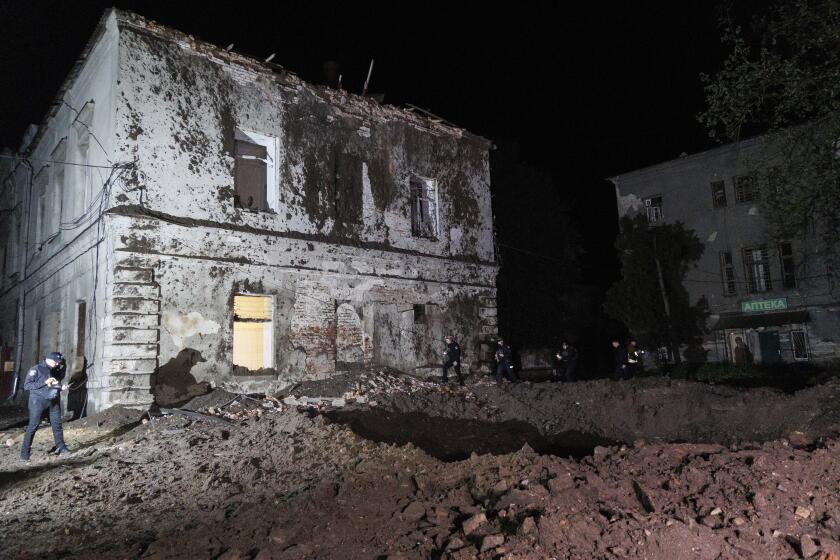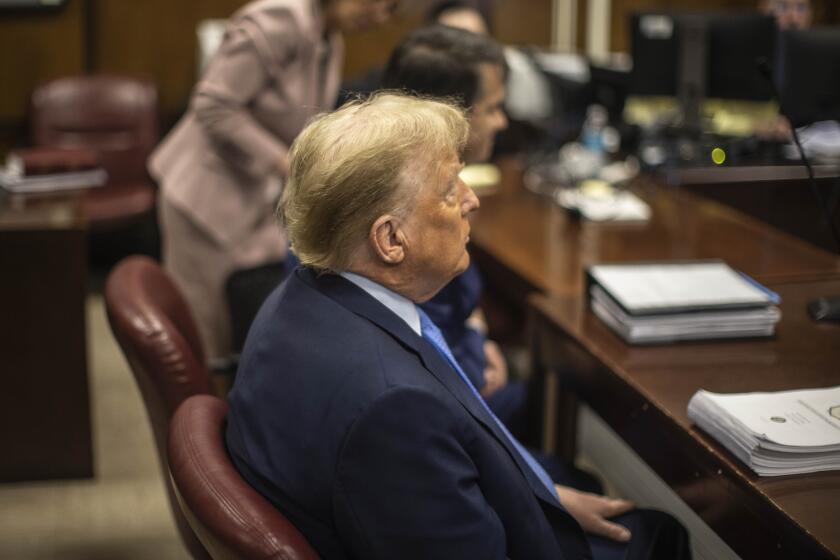Prime Minister of Japan Skips Visit to Shrine
His eyes fixed firmly on reelection, Prime Minister Junichiro Koizumi balked at making a pilgrimage to the controversial Yasukuni Shrine today, avoiding a diplomatic clash with Japan’s former Asian enemies on the emotive 60th anniversary of its World War II surrender.
Koizumi did not appear at the Tokyo shrine this morning, choosing instead to join Emperor Akihito in a pledge for peace at a secular memorial service. Previous Koizumi visits to Yasukuni, where 14 top war criminals are commemorated alongside 2.5 million Japanese war dead, have raised questions about the authenticity of Japan’s remorse for its wartime conduct and infuriated Asian neighbors, China, North Korea and South Korea in particular.
But on a day marked in other parts of Asia by demonstrations recalling victory over Japanese occupation and brutality, Koizumi issued a statement reaffirming his country’s peaceful intentions.
“Japan is resolved to contribute to world peace and prosperity without starting a war again,” the statement said. He went on to apologize for his country’s role in the conflict: “Japan caused huge damage and suffering to many countries, especially the people of Asia, with its colonization and aggression.
“Humbly accepting this fact of history, we again express our deep remorse and heartfelt apology and offer our condolences to the victims of the war at home and abroad,” the statement said.
The decision over whether to attend the private religious services at Yasukuni has been a Hamlet-style struggle for Koizumi who, like millions of Japanese citizens, sees Yasukuni as a place to honor fallen family members (the prime minister has a cousin among those honored).
It also mirrors the culture war inside Japan between the official pacifism that defined the postwar years and the rising assertion of nationalists who contend Japan has apologized sufficiently for its history, or has nothing to apologize for.
Yasukuni has become a symbol of that battle.
The Shinto shrine’s compound includes a museum that presents the country’s years of conflict from 1931 to 1945 as a noble struggle against Western imperialism in Asia, while ignoring evidence of Japan’s own -- frequently cruel -- colonization of the Pacific region. That unapologetic atmosphere makes Yasukuni a sanctuary for Japanese nationalists on Aug. 15, a date otherwise associated here with defeat and humiliation.
Koizumi has visited the shrine every year since becoming prime minister in 2001, but has never kept his pledge to go on the symbolic Aug. 15 date. Expectations had been running high that he would respond to a nationalist clamor to do so on the 60th anniversary of the war’s end.
A more pressing political imperative appears to have intervened.
Last week, Koizumi put his leadership on the line by calling a snap election over the issue of reforming Japan’s bloated public sector. The trigger was the defeat of his plan to privatize Japan Post, the mammoth state-owned institution that, in addition to handling the mail, is the nation’s biggest bank and insurance provider, with $3 trillion in assets.
Critics contend that governments have always used those savings to fund inefficient and unnecessary public works projects for political reasons, and Koizumi argues only privatization can cure that addiction to wasteful spending.
But the election call is a high-risk venture. Koizumi’s popularity had been waning, and some of the most vociferous opposition to privatization came from within his own Liberal Democratic Party. Many commentators initially suggested that the election would fatally shatter the LDP and hand power to the opposition Democratic Party of Japan, or DPJ.
But Koizumi framed the Sept. 11 vote as a stark choice on a single issue. He cast himself as a reformist on a mission of principle, and his opponents as reactionaries stuck in the old Japan that no longer works.
The strategy was to allow postal reform to drown out issues on which Koizumi is seen as weak, notably the acrimonious state of relations with China and the Koreas. So far, the gamble is showing signs of working. Three polls in the last week registered climbing support for Koizumi. A Mainichi newspaper poll released today put his approval rating at 51%, its highest point in 15 months.
Meanwhile, the prime minister’s opponents have floundered out of the gate. The DPJ has been forced to defend a heavily nuanced position of opposing the details, but not the principle, of privatizing Japan Post. And Koizumi has mercilessly attacked the dissenters in his own party, painting them as an incorrigible old guard standing in the way of economic and political modernization. He has refused to endorse their candidacies on Sept. 11 and will run his own, pro-privatization candidates against them.
For their part, the LDP rebels appear confused and off-balance, with some trying to create a new party in time for the election and others openly expressing a desire to be allowed to return to the fold after the vote.
Energized by his early momentum, Koizumi was clearly determined not to change the subject by visiting the Yasukuni Shrine. “I have no intention of making things related to Yasukuni an election issue,” he said last week. Yet Koizumi has not backed away from plans to visit it sometime this year.
Those who have cast their political fortunes with Koizumi seemed to accept the tactical assessment that there was no advantage in further roiling relations with Japan’s neighbors.
“I paid a visit on New Year’s Day,” said Education and Culture Minister Nariaki Nakayama. “There’s no need to dare going at a time like this.”
More to Read
Start your day right
Sign up for Essential California for news, features and recommendations from the L.A. Times and beyond in your inbox six days a week.
You may occasionally receive promotional content from the Los Angeles Times.






